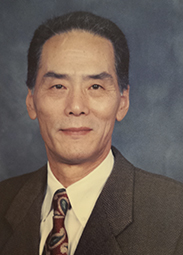This month’s column may feel a bit boring, but it covers a topic every cleaner should know: the proper amount of soap to use. Although the examples here come from wet cleaning, the same principle applies to all types of water-based laundry.
One of the most common questions I’ve received over the years is: “I’m using a 50-pound washer—how much soap should I put in?”
Unfortunately, there is no universal formula for water volume and soap dosage. The correct amount depends heavily on water quality—whether it’s hard water or soft water—as well as the condition of the laundry. If a soap salesman tells you to use a set number of ounces of detergent per pound of washer capacity without checking your water quality, that advice is misleading.
Hard water (rich in minerals like calcium and magnesium) requires more soap. Soft water requires less soap.
For example, the eastern U.S. (Manhattan, Long Island) is known for soft water, while California typically has hard water. Soap usage between these two regions can differ by two or even three times.
Hard water usually has a pH above 8 and can reach 9 in some places. While mineral-rich water can taste good (like spring water), it often contains lime scale and other impurities that make it unsuitable for drinking and troublesome for laundry. In Los Angeles or Las Vegas, groundwater is heavily mineralized, giving the water a bad reputation. For cleaners, hard water is frustrating because soap doesn’t dissolve or work well, so more has to be used. Hard water also causes scale in boilers and corrosion in pipes. Many soaps contain water softening agents, but in extremely hard water regions, installing a water softener is advisable.

Water Testing
When I ran a commercial laundry that used more than 10,000 gallons of water per day, regular water testing was required by the city. While this wasn’t voluntary, it turned out to be very useful because it allowed me to adjust chemical usage scientifically. For this reason, I have always recommended that cleaners in problem areas test their water. Unfortunately, I’ve rarely heard of shops actually doing so. Given industry realities, this is understandable—but there are simpler ways to judge soap usage without formal testing.
Is My Water Hard or Soft?
There’s a quick test: wash your hands with soap. If the soap rinses off quickly and leaves a squeaky-clean feeling, you likely have hard water (the soap didn’t dissolve well). If the soap feels slippery and takes longer to rinse off, you likely have soft water.
Adjusting Soap by Foam
Foam levels vary by product because detergent concentrations differ. While not highly scientific, watching the foam can be a practical guide.
Soap’s active ingredient, surfactant, reduces water’s surface tension so it can penetrate fabric and remove soil. Any leftover surfactant forms bubbles when agitated. Foam, therefore, is simply a by-product of unused surfactant—it doesn’t mean the laundry is cleaner.
As a rule of thumb: If, at the start of the wash, you see 2~3 inches of foam on the water surface, that’s usually the right amount. Foam will naturally decrease as the surfactant works on the soil. A small amount of foam left is like an “insurance policy” against under-dosing.
Problems with Too Much Soap
As a soap salesman, I might not enjoy saying this—but overusing soap is harmful in every way:
- It can cause color fading, especially with high-alkaline detergents.
- It creates unnecessary foam, which traps dirt and bacteria. Unless rinsed thoroughly, this residue remains in fabrics, leading to unclean laundry or even unpleasant odors.
- It’s simply a waste of money. Instead of complaining about high soap prices, use the correct amount.
Too Much Foam in the Washer?
Sometimes, especially with automatic injection systems, the washer can fill with excess foam. If that happens, add a small amount of conditioner. Conditioner quickly suppresses foam, allowing for complete rinsing and cleaner laundry. Using a little conditioner in the final rinse—whether in wet cleaning or shirt laundry—ensures that soap residues are fully removed, leaving clothes fresh and clean.

Yangsoo Kim
The author is the developer of Aqua Master wet cleaning chemicals and is currently operating Green Life Cleaners, a 100% wet cleaning service. You can contact him by phone (201) 699-7227 or email at yangkim50@gmail.com.

